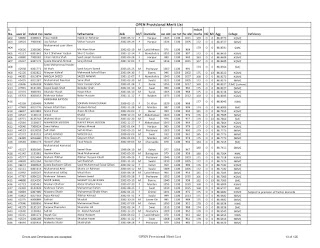gaseous exchange or respiration notes for class 10 and 12th
10 GASEOUS EXCHANGE
All living organisms need
energy to perform their life sustaining activities We also know that the
ultimate source of energy for life is sunlight Photosynthetic organisms capture
sunlight and prepare energy rich organic
molecules (food) by utilizing carbon dioxide and water. Oxygen is released as a
bye product of photosynthesis. Respiration takes place in all organisms During
respiration they utilize oxygen to break down organic molecules into carbon
dioxide and water to release energy. In this unit we will study how organism
give and take the gases (carbon dioxide and oxygen) which are needed for
photosynthesis and respiration
We will also study the human
respiratory system and its common diseases in detail.
Q.1 Differentiates between
respiration and breathing? Exercise question
Or discuss Respiration
gaseous Exchange and Breathing
Answer: Respiration: Respiration is an
energy releasing process at the cellular level. In this process, food molecules
(e.g glucose) are broken down into simpler compounds like carbon dioxide and water
with the release of energy.
Glucose + Oxygen → carbon
dioxide + water + energy
We know that for aerobic
respiration, oxygen is required for the complete oxidation of food molecules
while CO, is released as a by product. It means that all organisms need to
take O2 from the environment (air or also need to release CO2
into the environment.
Gaseous exchange means the
exchange of oxygen and carbon dioxide between an organism and its environment.
Gaseous exchange occurs by diffusion.
Breathing: Breathing
is the physical process in which animals move air into and out of their body.
It is done to get oxygen from air and to release carbon dioxide in it.
In higher animals, lungs are the
organs of breathing In breathing, fresh air is made available to the respiratory
surface of the lung for gaseous exchange. As fresh air has a higher concentration of
oxygen than in air is present in the blood therefore, it diffuses into the blood. At the same time, the concentration of
carbon dioxide is higher in the blood,
so it is diffuses into the lungs and is expelled out by the process of
breathing.
|
Breathing
|
Respiration
|
|
Movement
of air into and out of the lungs
|
Breakdown
of food to release energy
|
|
Muscles
are involved
|
Muscles
are not involved
|
|
Energy
is not released
|
Energy
is released
|
|
Take
place at lungs
|
Takes
place in all body cells
|
Q2 part (a). Why do plants
need a specialized respiratory system? Exercise question
Or discuss Gaseous Exchanging
in Plants
Answer: In
order to exchange oxygen and carbon dioxide with environment, the plant need a
specialized respiratory system.
The
respiratory system of plants includes: epidermis, roots, epidermis, cuticle,
stomata and lenticles.
a.
Epidermis:
In plants, the gaseous exchange
between the body and the environment occurs through the surface. The outer
surface of the root, stem and leaves is called the epidermis. This layer allows
the exchange of gases between the inner cells and the environment.
b.
Cuticle:
At some parts a thick cuticle is
present over the epidermis. It also allows the exchange of gases.
c.
Stomata:
In leaves and young stems, the
epidermis has small pores called stomata. In these parts the air moves in and
out through the stomata. Inside the body, gaseous exchange occurs between the
cells and air.
d.
Lenticels:
In woody stems, the entire surface
is covered by bark Gaseous exchange cannot occur through bark. The bark
contains special pores called lenticels, which allow the gaseous exchange with
the environment.

Q.
part (b) The gaseous exchange in plants
is important for photosynthesis and respiration. Explain the types of gases
exchanged and its mechanism Exercise question
Ans: The gaseous exchange in
plants is important for photosynthesis and respiration. There are two types of
gaseous exchange.
 1. Gaseous exchange during day:
1. Gaseous exchange during day:
During
the daytime, all plant cells are carrying out respiration. The green parts
(leaves) of plants are also carrying out photosynthesis. For photosynthesis, the leaves use carbon dioxide
which is produced during respiration. They also take carbon dioxide from the environment.
For
respiration, leaves use oxygen which is produced during photosynthesis. During
respiration, they release carbon dioxide which is used in photosynthesis. So,
during daytime leaves are taking carbon dioxide from the environment and
releasing oxygen in it.
2. Gaseous exchange during night:
During the night, all
cells are carrying out respiration while there is no photosynthesis. So, the
cells get oxygen from the environment and release carbon dioxide.
Q3. Draw the diagram of
the air passage in the human and describe the role of different parts in the
flow of air through it. Exercise question
OR discuss Gaseous
Exchange in Humans?
Ans: Gaseous Exchange in Humans : Humans
have an efficient respiratory system adopted well for the terrestrial mode of
life. This system ensures a smooth exchange of gases between the environment
and the human body.
This system can be divided into
two main components which are:
·
Air passageway
·
Lungs
a).
Air Passageway:
When air enters the body, it
passes through connected tubes to reach the lungs. After gaseous exchange, air
moves from the lungs to the outside through the same connected tubes. These
connected tubes are collectively called the air passageway. It consists of
nostrils and nasal cavities, pharynx, larynx, trachea, bronchi and bronchioles.
1. NOSTRILES:
Two openings or external
nostrils lie on the ventral side of the head. They allow the air from the
outside into two nasal cavities.
2. NASAL CAVITIES:
In nasal cavities, the air is
warmed, moistened and dust freed by the and hairs and the mucous membrane of
the nasal cavity, therefore We should breathe through the nose not through the
mouth to keep ourselves healthy.
3.
PHARYNX:
The nasal cavities lead into the
pharynx which is about a 4.5 inches long muscular passage. It is also lined by
the mucous membrane.
4. LARYNX:
The air moves from the pharynx
into the larynx or voice box. It
surrounds the upper part of the trachea. The cavity of the larynx is also lined by the mucous
membrane. At the back of the pharynx are
two passages, one opens into esophagus on the dorsal side and the other opens
through the glottis into the trachea on the ventral side. The glottis is
guarded by a lid like structure called the epiglottis.
5. TRACHEA:
The larynx opens into the
trachea or wind pipe. It is a tubular
structure. It lies ventral to the esophagus and extends to the chest cavity or thorax. The
inner surface of the trachea is ciliated and secretes mucus. This helps to
filter, moisten and warm the incoming air. The trachea has 16 to 20 C-shaped
cartilaginous rings which prevent it from collapsing and keep the passage of
air open.
6. BRONCHI:
Inside the thorax, the trachea
divides into two branches called bronchi. Each bronchus enters the lung on its
own side. The bronchi also possess the cartilaginous rings but smaller than those
of the trachea. Each bronchus, on entering the lungs, divides and sub-divides progressively
into smaller bronchi.
7. BRONCHIOLES:
When the smaller bronchi attain
the diameter of one millimeter or less, then they are called bronchioles.
Bronchioles have no cartilage. Each bronchiole ends in a duct. The duct opens
in a cluster of pouches, which resemble bunches of grapes. Each pouch is
microscopic structure and is called alveolus (plural Alveoli). The alveoli are
thin-walled and provide the surface for gaseous exchange. Their walls are
covered with a network of blood capillaries where gaseous exchange occurs
b).
Lungs;
The lungs are placed in the
chest cavity. From above and sides, lungs are enclosed by the chest wall, while
there is a thick muscular structure called the diaphragm below the lungs. Each
lung is enclosed in a double membrane called pleura. It contains a pleural
fluid. This fluid makes the movements of the lungs (expansion and contraction)
easy.

Q4. Describe the Mechanism
of Breathing in human being? Exercise question
Ans: Mechanism of
Breathing : Breathing consists of two phases, the taking in of air
called inspiration and letting out of
air called expiration.These two phases take place continuously one after the other. Air moves in when the air pressure in the lungs is lower than the pressure outside the body and it moves out when the pressure in the lungs is greater the than
the atmospheric pressure.
a)
Inspiration: also called inhalation.During
inspiration, the volume of the chest cavity increases and the pressure in the
lungs decreases. It happens due to two reasons.
·
The muscles of the diaphragm contract,
so it becomes flat instead of its domed position.
·
The intercostal muscles present between
the ribs, contract. Due to their contraction, the ribcage expands.
Due to these movements the
volume of the chest cavity increases and so pressure on the lungs decreases. As
a result, the atmospheric air rushes in to the lungs through the air passageway.
b)
Expiration: also called exhalation. During
this process, the muscles of the ribs and the diaphragm relax. The ribcage goes
down to its original position whereas the diaphragm becomes dome-shaped.The
volume of the chest cavity is decreased. It increases the pressure on the lungs
to expel the air out.

Q5. Gaseous exchange in Lungs:
 We
know that the alveoli are very thin-walled and have a network of blood
capillaries So they are an excellent site for gaseous exchange. The blood which
enters these capillaries has a low oxygen concentration whereas the inhaled air
present in the alveoli has a higher oxygen concentration. Therefore, oxygen
from the alveoli diffuses into the capillaries.
We
know that the alveoli are very thin-walled and have a network of blood
capillaries So they are an excellent site for gaseous exchange. The blood which
enters these capillaries has a low oxygen concentration whereas the inhaled air
present in the alveoli has a higher oxygen concentration. Therefore, oxygen
from the alveoli diffuses into the capillaries.
Similarly, the carbon dioxide
concentration in the blood present in the capillaries is more than that of the
alveoli. Therefore carbon dioxide diffuses out of the blood and into the
alveoli.
Q6. Explain Biological Consequences of Smoking?
Ans: Biological Consequences of
Smoking :Smokers have a much higher risk
of developing life threatening diseases. most crucial risk of smoking is cancer in the
lungs, kidneys, oral cavity, larynx, breast, bladder, oesophagus, pancreas and
stomach
Tobacco smoke contains over
4,000 different chemicals. Out of these,
there are more than 69 known carcinogens (cancer causing chemicals). The
effects of Some chemicals found in cigarettes are
given below:
·
The majority of the particulate matter inhaled by a smoker is composed of tar. Within
tar, there are many carcinogens. Tar in
its solid form also stains the teeth and
fingers of smokers. It can also stain and damage the lung tissue. Tar
also increases the production of mucous and phlegm
·
Nicotine has many harmful effects such
as increased heart rate and blood
pressure, constriction in the blood vessels, damage to the muscles, and
disturbance in hormonal systems and
metabolism. Nicotine can also increase platelet stickiness in the blood which
can cause blockage and cause coronary diseases.
·
Carbon monoxide is formed when a
cigarette is lit. It combines with red blood cells and prevents oxygen
transportation. When carbon monoxide enters the air ways, it stays along with
other toxic chemicals contained in cigarette smoke. These toxins cause
inflammation impair lung functions, and increase the risk of lung diseases.
·
Benzene is a major component of
cigarettes. It is a carcinogen and causes blood cancer Leukaemia).
·
Similarly, formaldehyde present in
cigarettes causes cancer and respiratory skin and gastrointestinal problems.
·
Thirty different metals are also found
in cigarette smoke, many of which have been linked to cancer. A few of the
metals found are; Arsenic, Nickel, Cadmium, Chromium, and Lead. Radioactive
compounds are also found in cigarettes, all of them are carcinogens.
Bad Social
Effects of Smoking:
The
Breathing of smoke-laden air by nonsmokers is known as passive smoking The majority
of the nonsmokers are allergic to cigarette smoke as it produces irritation in their
eyes and throats. They can also develop cancer by continuously living in an environment
polluted with cigarette smoke. Moreover, people tend do not like the company of
cigarette smokers due to the bad smell that comes from their mouth. For this
reason there are separate zones in public places such as offices, hotels and
restaurants for smokers. The Government has banned smoking at public places and
on public transport.
Q7.
Effect of Exercise on the Rate of Breathing
Under resting condition the rate
of breathing is 15-20 times per minute. During exercise this rate increases
instantly This is due to the fact that more oxygen is required for the
oxidation of glucose molecules to get more energy. As a result of this, more CO2
produced which thus accumulates in the blood.
When this blood reaches the
brain, the medulla (breathing centre) detects more carbon dioxide in the blood
and sends nerve impulses to the diaphragm and rib muscles at greater speed.
So the speed of contraction and
relaxation of these muscles increases. It increases the rate and depth of
breathing. During exercise, the breathing rate increases up to 30-40 times per
minute.
Q.
Compare the composition of inhaled and exhaled air? Exercise question
Ans
|
Composition
of Inspired and Expired Air
|
||
|
Air components
|
Inspired
Air
|
Expired
Air
|
|
Oxygen
Carbon
dioxide
Water
vapours
Temperature
|
21%
0.04%
Variable
Variable
|
16%
4%
Saturated
38
°C
|







